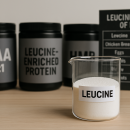We are all noticing a growing trend: consumers are increasingly reaching for labels that say “natural colourants” or “no artificial colourants”
This is not just the preference of a select few. It reflects a global shift, with people questioning the use of synthetic additives in their products. This includes anything, from health beverages, supplements, medicines to M&Ms.
Studies have linked certain synthetic dyes to hyperactivity in children, allergic reactions, and potential carcinogenic effects. While regulators have allowed their use under limits, consumer trust has eroded as research raises more red flags.
In the U.S., this trend has gained regulatory momentum. The FDA has announced the phase-out of six petroleum-based dyes commonly used in supplements—including Red No. 40 (Allura Red), Yellow No. 5 (Tartrazine), and Blue No. 1 (Brilliant Blue)—by 2026.
Easy fix! Let’s just switch to Natural colourants!
At first glance, the solution might seem simple: replace Red #40 with beet juice or Yellow #5 with turmeric. But in reality, formulation is far more complex.
Natural colorants behave differently in terms of stability, solubility, pH sensitivity, and light exposure.
Natural colourants can fade, shift, or interact with other nutrients in ways that make consistency and shelf life a real challenge. Every time you consider an active ingredient, you must think carefully about how it will react with the colorant.
This is where my work comes in.
As a product developer, I specialise in formulating with natural colorants creating supplements that are not only effective in delivering key nutrients but also visually appealing, stable, and health-enhancing.
My formulations leverage natural sources of colour to achieve vibrant, consistent products that withstand storage, pH fluctuations, and other real-world stresses without compromising consumer trust.

The Formulation Challenges
Unlike FD&C synthetic dyes (which are uniform, stable, and predictable), natural pigments bring challenges that keep formulators awake at night (but not me):
-
pH Sensitivity: Anthocyanins (from berries, purple sweet potato or grapeskin) shift color dramatically with pH, from red in acidic solutions to purple/blue in neutral environments (see below). Imagine trying to standardise that in a cherry-flavoured multivitamin drink with alkaline excipients!
-
Light Sensitivity: drinks made with beetroot juice powder degrade quickly under sunlight. This is a challenge especially if you consume the product outdoors over relatively long period of time (e.g. sports drinks).
-
Heat Stability: Beta-carotene may withstand some processing, but spirulina-derived phycocyanin falls apart at pasteurisation temperatures.
-
Flavour Impact: some colourants convey a specific flavour that may not be pleasant in certain applications. Turmeric for yellow brings a sharp earthy note. Synthetic dyes don’t carry that kind of baggage and are easier to work with.
-
Batch Variability: Nature doesn’t grow every blueberry or paprika the same way harvest season, soil, and this can change pigment intensity, making consistency across batches a challenge. This is especially true if you use whole fruit or vegetable powders for colouring purposes.

How anthocyanin changes colour at different pH of the solution (lower pH= more acidic) (Image from Hamzah et al., 2021)
Rare Insights That Consumers Don’t Realize
-
“Natural” ≠ “safer”: Some natural pigments (like annatto or cochineal carmine) can trigger allergic reactions in sensitive individuals.
-
Cross-interactions: Minerals in supplements (like iron or calcium) can cause pigment degradation, meaning the pretty green spirulina turns murky brown in your “superfood” blend after a short while.
-
Cost factor: Natural colors are often several times more expensive than synthetics, and their instability means higher doses (overages) are needed.
Why Formulators Still Try
Despite the headaches, formulators (myself included) work with natural colors because:
-
Consumer demand is relentless. “No artificial colors” is now an expectation.
-
Marketing halo: Brightly colored gummies from natural extracts signal health.I
- Potential health benefits. Many natural pigments that I use, like anthocyanins from grape skin, carotenoids such as beta-carotene, and betalains from beetroot go beyond coloring. They act as antioxidants, support cardiovascular health, boost immune and skin function, reduce inflammation, and may even provide cognitive protection. I use them in doses that are sufficient not only for colouring but to confer health benefits.
The Bottom Line
“Natural color” sounds simple, but in practice it’s a balancing act of chemistry, stability, regulation, and consumer expectations. Next time you see a bright yellow turmeric gummy or a deep purple beet-flavored pre-workout, remember: it’s not just a sprinkle of plants but the result of serious formulation gymnastics.
To view my Professional Profile on LinkedIn:please click here
To see my latest product creations: www.bioteenhealth.com
To view my Scientific Publications on PubMed:please click here
To get in touch, please write to: info@supplementscientist.com
Follow supplementscientist.com on Facebook: please click here
Disclaimers
Medical: The information presented on this website is intended for adults 18 or over. Its aim is purely educational and does not constitute medical advice. Please consult a medical or health professional before you begin any program related to exercise, nutrition, or supplementation especially if you have a medical condition. If you consume any product mentioned on our site, you do so on your own free will, and you knowingly and voluntarily accept the risks.
Other: The views expressed in this blog article are solely mine and do not represent the opinions or positions of any company or institution with which I am associated. Any information or opinions provided are based on my personal experiences, research, and understanding. I strive to ensure accuracy and reliability of the information provided.
© 2025. Supplementscientist.com








Leave a Reply